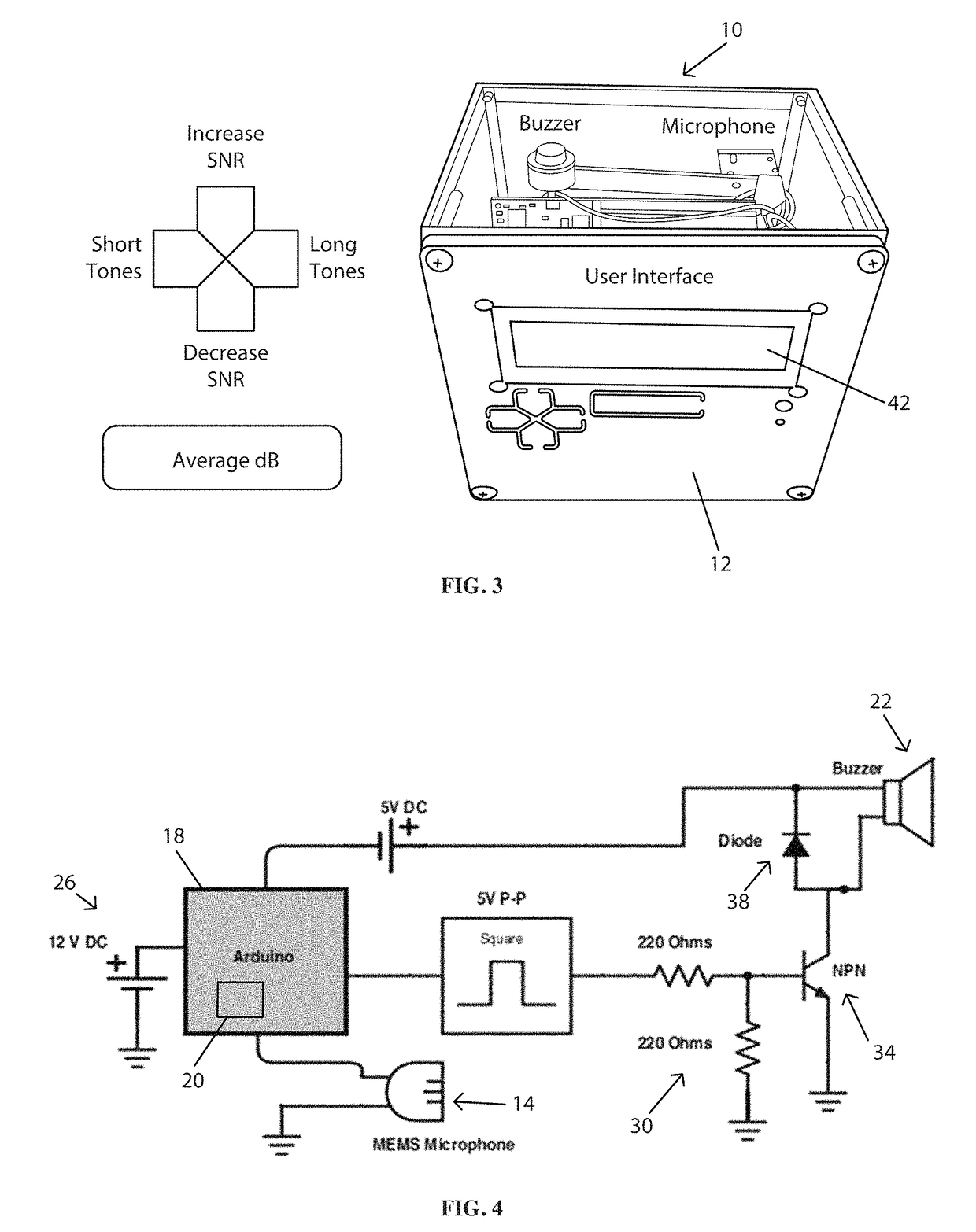Dynamic alarm system for reducing alarm fatigue
a dynamic alarm system and alarm technology, applied in the field of alarm fatigue reduction, can solve the problems of no incumbent, stand-alone technology, and the vicious cycle of alarm competition, and achieve the effect of reducing the salience of individual alarms
- Summary
- Abstract
- Description
- Claims
- Application Information
AI Technical Summary
Benefits of technology
Problems solved by technology
Method used
Image
Examples
experiment 2
[0087 will employ Experiment 1's paradigm to study novel alarm sounds and integrate audible and visual cues to create an effective multisensory alarm.
[0088]Preliminary Studies
[0089]Multisensory input leads to facilitation and improved response time and accuracy. Dr. Wallace, amongst many other neuroscience labs, has shown that integration of information across multiple senses (i.e., audition and vision) improves detection, accuracy, and response time. Multisensory integration can be modulated by attention and sensory training protocols enhance performance. A significant foundation of psychological, neuroscience, and human factors research has informed applied studies to examine how divided attention abilities might be improved. For example, training focused on the combined use of visual and auditory (multisensory) cues has been shown to significantly increase sensory performance and perception.
[0090]Multisensory training can improve attentional load processing and performance on pul...
experiment 1
[0100] Hypothesis 1A: The dynamic auditory alarm range (encompassing 90% of the overall change in response time and accuracy) will be between −20 and −10 dB below ambient OR noise at 60 dB. Hypothesis 1B: Efficiency (RT / Accuracy) will be equivalent across clinical complexities at negative SNRs. Pilot data has informed our methodology. For each participant, we will first determine their near-threshold hearing by using a 7-min. 3 down 1 up staircase function with 8 reversals. The primary / clinical task will utilize two “easy” and two “difficult” clinical scenarios. Accuracy will be based on the correct medication selections for each clinical scenario with demerit for abandonment of the secondary task. To generate an individual amplitude-response curve, each participant will spend about 67 minutes responding to five 13.3-min. blocks containing five different randomly allocated alarm volumes (near-threshold, −20 dB, −11 dB, −2 dB, and +4 dB from 60 dB OR background noise) for a total of ...
PUM
 Login to View More
Login to View More Abstract
Description
Claims
Application Information
 Login to View More
Login to View More - R&D
- Intellectual Property
- Life Sciences
- Materials
- Tech Scout
- Unparalleled Data Quality
- Higher Quality Content
- 60% Fewer Hallucinations
Browse by: Latest US Patents, China's latest patents, Technical Efficacy Thesaurus, Application Domain, Technology Topic, Popular Technical Reports.
© 2025 PatSnap. All rights reserved.Legal|Privacy policy|Modern Slavery Act Transparency Statement|Sitemap|About US| Contact US: help@patsnap.com



